- 28-04-2024
- 12-05-2024
- 26-05-2024
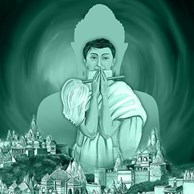
The Nazi Hakenkreuz symbol is the most widely known Nazi symbol and has become a symbol of the Nazi party and its heinous crimes against humanity. Displaying this symbol publicly can be harmful.
Hindu, Buddhist, Jain and other faith communities have long used the sacred Swastika as an auspicious symbol of purity, love, peace and good fortune.
It is not against the law to publicly display the Swastika (which may be mistaken for the Nazi Hakenkreuz symbol) for genuine cultural or religious purposes.
The law is called the Summary Offences Amendment (Nazi Symbol Prohibition) Act 2022.
Under this law, it is a criminal offence to intentionally display the Nazi Hakenkreuz symbol if:

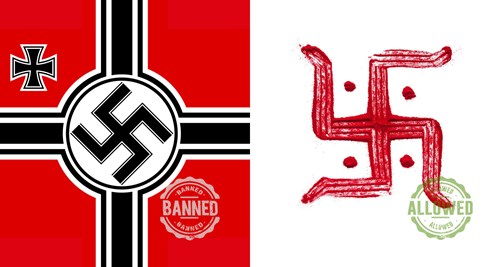



The Nazi Hakenkreuz symbol is the most widely known Nazi Symbol.
The Nazi Hakenkreuz symbol was used by the Nazi party and the Third Reich in Germany during the early 20th century.
Hakenkreuz means twisted or hooked cross in German, and became a symbol of the Nazi party. The Nazi party committed heinous crimes against humanity, particularly against Jewish people.
To this day some people, including neo-Nazi groups, still use the Nazi Hakenkreuz symbol to intimidate, incite hatred and spread messages of antisemitism, and intolerance towards the Jewish community and other groups.
Nazi symbols represent an ideology that is fundamentally incompatible with Victoria’s multicultural, multi-faith and democratic society. Displaying them can be harmful, hence the ban.
The law recognises that the Swastika is an ancient and sacred symbol of peace and good fortune for the Buddhist, Hindu, Jain, and other faith communities.
Faith communities use the Swastika at entrances of homes, in businesses, temples and in the community, while conducting religious rituals, and during cultural events and celebrations.
Examples of possible genuine religious and cultural purposes permitted under the law include:
There are many variations of the sacred Swastika across and within faith groups. Some examples are shown here.

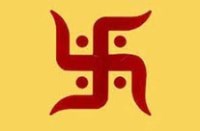

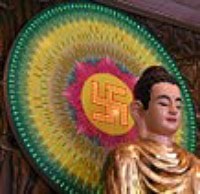

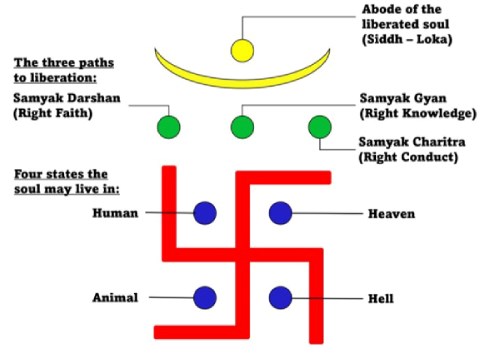
It is not against the law to display the Nazi Hakenkreuz symbol for genuine educational, scientific, academic, or artistic purposes.
An example of possible genuine educational purposes permitted under the law is a bookshop displaying an educational textbook on World War II, which has a Nazi Hakenkreuz symbol on the cover.
Police can charge a person who is suspected of intentionally displaying the Nazi Hakenkreuz symbol in public, where the display does not fall within one of the exceptions.
A person who is found guilty of the offence could face a fine of approximately $22,000 or 120 penalty units, 12 months’ imprisonment, or both.
Police can also direct a person to remove the Nazi Hakenkreuz symbol from public view.
A person who fails to remove a Nazi symbol from public view following a direction can be charged with an offence. If guilty, they can be fined $1,800 or 10 penalty units.
This refers to displaying a Nazi Hakenkreuz symbol in a public place or where someone in a public place can see it.
The law makes it a criminal offence to publicly display the Nazi Hakenkreuz symbol. This prevents the symbol being used to harm Jewish community and other groups in Victoria.
The purpose of the law is not to ban the use of the Swastika for genuine cultural or religious purposes by the Hindu, Buddhist, Jain, and other faith communities.
It is unlikely that police will speak with members from the community about the display of a sacred Swastika. If this does occur, they will be looking to confirm the display is for genuine religious and cultural use which is permitted by the new law.
Victoria Police has developed guidance for its members regarding the new law. This guidance highlights that the new offences are only intended to apply to displays associated with the Nazi ideology.
If Victoria Police receive a complaint that someone might be breaking the law, they may investigate. If Victoria Police members are unsure whether a person has broken the law, they will seek guidance from an operational supervisor within Victoria Police.
Victoria Police may also speak to the person who made the report, to explain that there are exceptions to the ban and that some people may be displaying the Swastika for genuine cultural and religious reasons.
Victoria Legal Aid provides free legal advice to individuals on a range of matters.
Phone help is available in languages other than English - visit Victoria Legal Aid Speak to us in your .
The Law Institute of Victoria Legal Referral Service can help you find the right lawyer.